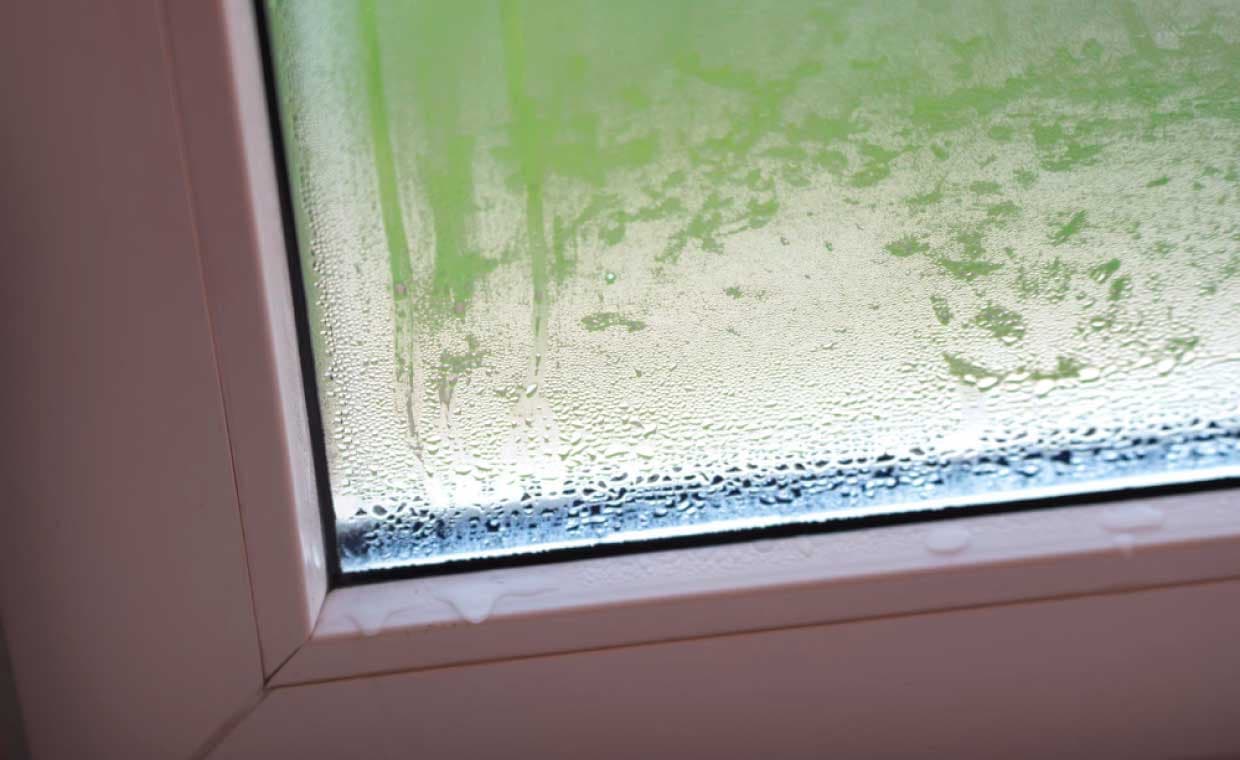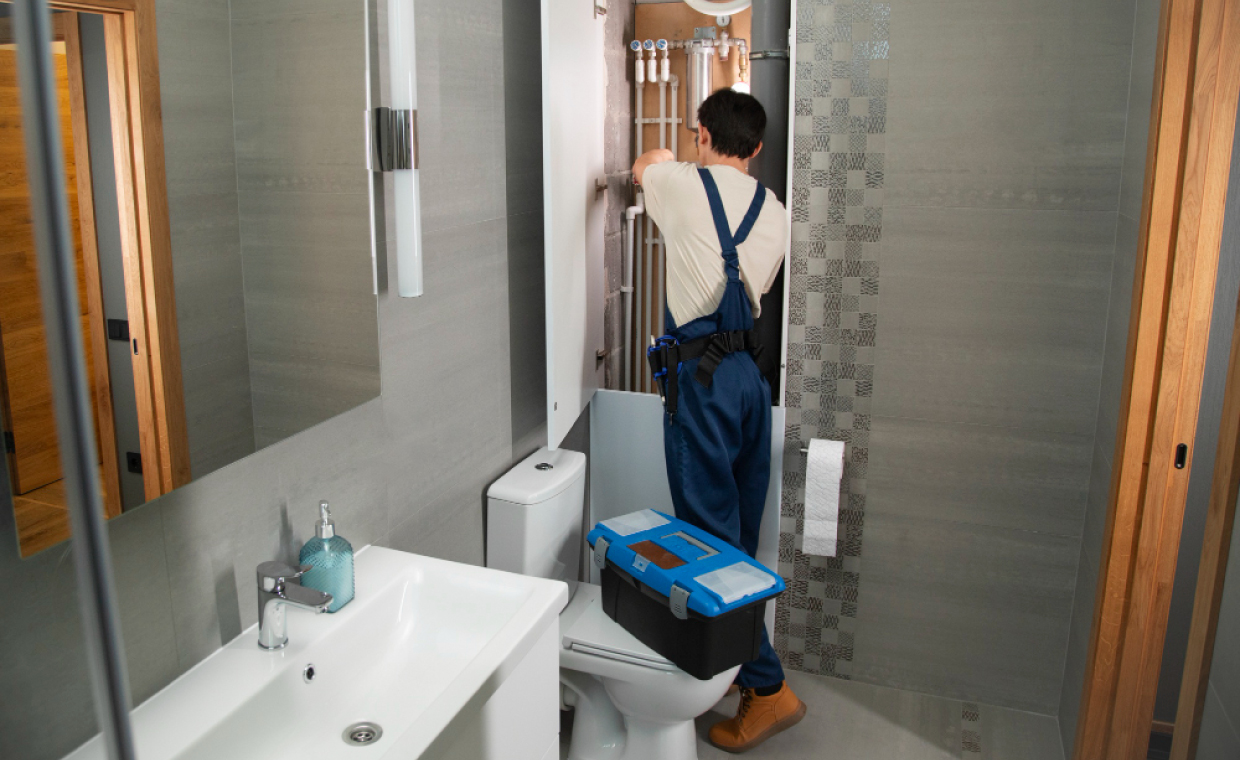
Table of Contents
Between high humidity, heavy rains in summers, and wild freeze-thaw cycles in winter, home windows can really take a beating. Add to that the usual wear and tear, damaged window frames, structural settling, and age.
What does that leave you with? The perfect conditions for year-round leaks and stained, unsightly drywall that you just can’t help but notice. In this guide, we’ll walk you through the main window leaking causes, explore some of the best DIY repair options, and discuss when it’s high time to call it quits and hire the pros.
Leaking Windows: Main Causes
Leaks don’t just pop up randomly. Here’s a quick look at the usual culprits:
- Poor Installation: Poor installation is often the cause of all the problems that arise down the line. Several issues could go wrong, including incorrect measurements, crooked flashing, improperly installed house wrap, poor shimming, and even damage to the window before installation.
- Cracked/Missing Caulking: Age and weather conditions break down caulking. If it dries, cracks, or peels away, water goes right in.
- Poor Weather Stripping: Cracked or missing weather stripping is messy; it creates gaps that let water and drafts in.
- Plugged Weep Holes: Found on the outside bottom of the window, these tiny drainage holes help channel condensation and moisture from your frame. If caulked over or filled with gunk, the water ends up leaking inside.
- Rotten/Warped Frames: Wooden frames expand and contract with the weather, resulting in rot and gaps.
- Structural Changes: Over time, any house’s foundation settles. This gradual shifting can cause leaks and gaps.
Foggy panes, soft or crumbly drywall, a musty smell, peeling paint, or water sitting on the window ledge require your attention. It’s cheaper to address a small problem than to find out months later that your wall is rotten. Remember, the CMHC Capital Replacement Planning Manual states that regular maintenance can boost the window’s lifespan up to 15 years.
Finding the Window Leak Source

If you’re not sure how the water is getting into your house, don’t fret. Here’s a look at a simple, easy-to-follow DIY test to pinpoint the source of the leak:
- Inspect for Dampness: Water stains, mould, mildew, or peeling wallpaper are glaring red flags.
- Hose Test: Think of it as a rain simulation – spray water outside the window while someone checks inside for drips.
- Flashlight Test: It’s a night test. Shine a flashlight around the frame to pinpoint gaps.
- Smoke Test: Light a candle (or incense) and bring it near a window frame. Flickering smoke will help pinpoint the leak source.
If, despite your best efforts, leaks keep coming back, you might be in over your head. Natural Resources Canada warns that continuous window leaks could lead to problems within the wall cavity itself – a shortcut to mould and structural decay.
Fixing the Leaking Windows Problem

No need to call the professionals if you’re dealing with a minor issue. You can handle smaller DIY projects yourself, with no need for extensive maintenance skills. Here’s a look at a few quick, beginner-friendly solutions:
1. Re-caulk
Best for: cracked, peeling, or missing caulking around the window frame
- Remove the old caulk with a utility knife. Clean the area of any debris and dust.
- Apply a bead of caulk along the seam between the window and its frame.
- To remove air bubbles, smooth the bead with your finger. This will give a desired clean finish. Leave to dry.
Tip: Re-caulk on a dry day with mild temperatures. If your window has metal or vinyl parts, go for a waterproof exterior caulk.
2. Clear Weep Holes
Best for: water drains slowly after rain or collects on the windowsill
- Locate the weep holes on the bottom exterior of the window frame. These tiny drainage holes accumulate everything from dirt to bugs.
- If there’s gunk buildup, use a pipe cleaner or even a thin piece of wire to clear it out.
- Chances are, you won’t be able to clean out all the gunk with a wire. Use a small can of compressed air with a straw-style nozzle to blow the remaining debris.
- It’s time to put your DIY fix to the test. Just pour clean water onto the windowsill to ensure that it drains properly.
3. Replace Weatherstripping
Best for: drafty windows or visible gaps in the seal when shut
- Inspect your weatherstripping. If it’s torn, cracked, or missing altogether, remove the old strip and clean the area.
- Measure each side of the window frame and cut new weatherstripping sections.
- Install it. If it’s adhesive-backed, remove the paper; if it’s pressure-fit style, just press it into the dedicated groove.
Open and close the window a few times. It should operate smoothly.
4. Re-Glaze
Best for: older single-pane windows with cracked or missing putty
- Remove the old glazing compound with a utility knife. Proceed carefully to avoid damaging the points that hold the window.
- Use sandpaper to smooth the window frame. Wipe away dust.
- Roll the new compound into a rope and press it firmly around the glass edge. Smooth it out with a putty knife.
- Give the compound time to harden. Coat it with an oil-based wood primer to seal and protect it from cracking. Leave to dry.
- Paint over with your preferred color.
When It’s Time to Call the Window Repair Professional

If you’re dealing with structural issues, it’s time to hire professionals. Here’s what to look out for:
- Squishy or rotten wood;
- Water stains spreading down the wall;
- Mould growing behind the paint;
- Constantly foggy glass.
If you have no choice but to replace your old windows, pick ENERGY STAR–rated models. Although it’s not cheap, there are many local government loan and rebate programs that help homeowners finance everything from home insulation and energy-efficient windows to solar panels.
Next Steps
Drafts, water damage, and higher energy bills – window leaking can be a persistently annoying problem. To avoid costly replacements, do regular check-ups and clean your window sills, tracks, and weep holes. Many DIY projects are beginner- and budget-friendly, so they are a safe place to start. If you feel that all this home improvement business is over your head, off to the professional contractors you go.
Also Read: Common Types of Window Repairs and When to Hire a Professional






























